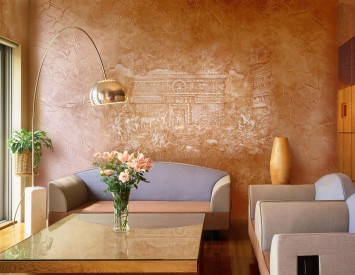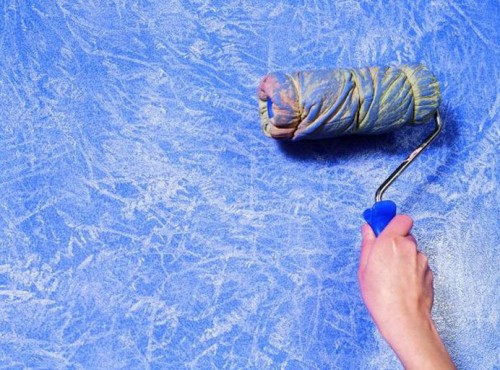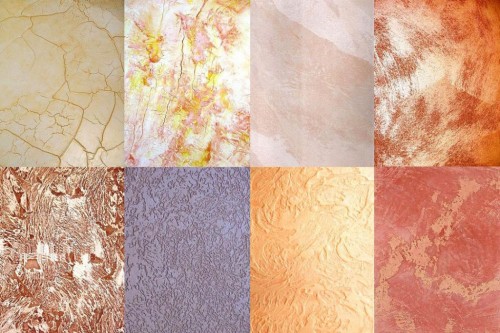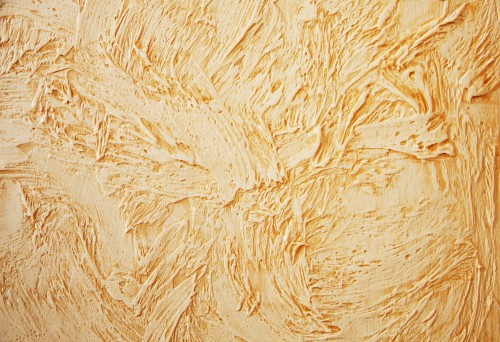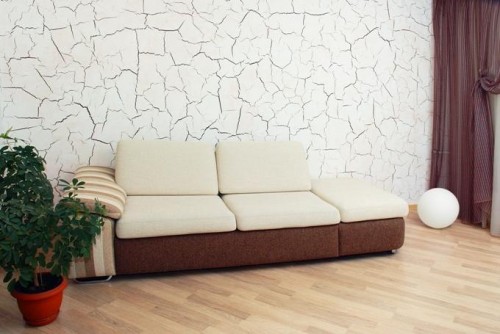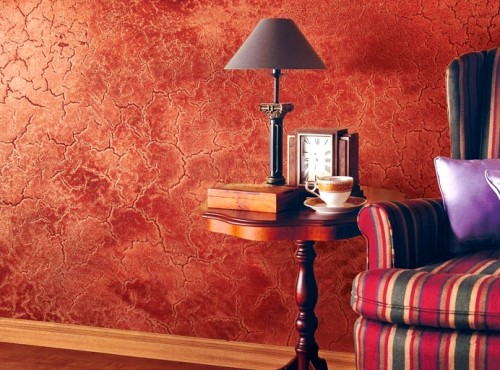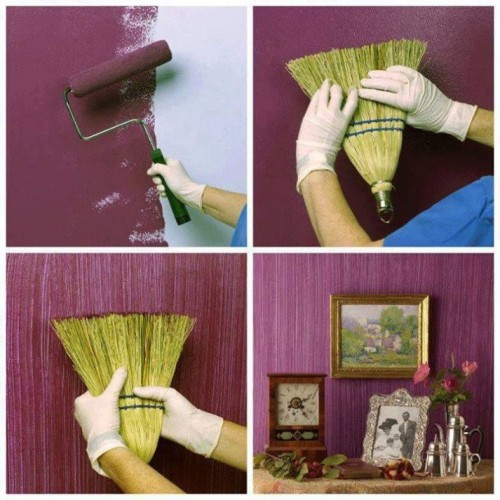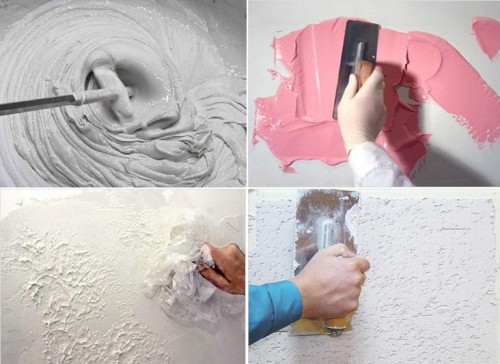In recent years, construction technologies have been active in recent years, and today a lot of manufacturers offer an extensive assortment of materials for every taste. In particular, a wide variety of materials for wall decoration appeared. Each homeowner can choose wallpaper products, paint, as well as a decorative plaster that creates the relief effect. It is about the latest option of wall cladding that will be discussed in this article.
Content
Varieties of relief plaster
Such facing material contains granules of mineral origin, which create the effect of relief. The size of such components may vary, so they determine the structure of the surface of the wall after applying the material. Also, in the production of this coating, a dye of a certain type can be used. It allows you to tint deeper and more intense, and contributes to the creation of visual effects.
Types of material in chemical composition
This material is customary to divide the types according to several criteria. According to fillers and chemical composition, this coating is divided into the following types:
- Mineral plaster is a facing coating that is made on the basis of cement and lime. It has the appearance of a dry mixture, which must be stirred in water before use until the necessary consistency is obtained. The composition of the plaster of this type may include marble crumbs. The volume of the relief will depend on the size of these interspersed. Mineral material has universal properties and is suitable both for the interior decoration of the room, and for the decoration of the outside of the facade.
- The silicone coating is characterized by the properties of elasticity and sufficient vapor permeability. The main advantage of such a coating is the ease of care. If the facade of the room is faced with a silicone coating, then it is sufficiently slightly rain to clean it so that the surface will return to its original state. Despite the high cost of products, it was this condition that became the reason that the silicone type of plaster is chosen mainly for the exterior decoration of buildings.
- Polymer or acrylic coating is a water-dispersion mixture that is completely ready for the application process. The composition of such a coating has a certain filler: it can be a glass of glass, ash waste, marble. Polymer plaster is resistant to various atmospheric phenomena, however, it has a low steam -resistance coefficient. Therefore, it is not recommended to decorate the facades of the premises.
- Silicate plaster - is a mineral substance, which uses liquid potassium glass. It serves as an astringent component of the solution. This type of finishing material is characterized by high vapor permeability, so it is optimal for decorating any type of room.
Types of plaster according to the structure of the picture
According to the structure of the formed image, such varieties of decorative coating can be distinguished:
- brill plaster (structure Rillen);
- homogeneous-seal-shaped (EDEL structure);
- modeling arbitrary coating (Roll structure).
Types of plaster by the method of relief formation
Depending on the final image, embossed plaster may vary in such groups:
- Venetian plaster - this coating creates the effect of marble walls. It includes flashing lime, water emulsion and natural marble flour. To decorate the room with this material, it is necessary to level the walls to an impeccable state. This is a prerequisite for the use of "Venetian" plaster. The material also meets the environmental parameters and has the properties of water resistance, fire safety, and does not carry extraneous smells.
- The textured coating is the most common material for decorating the interior, since it makes it possible to get the desired pattern without much effort. For this purpose, special tools are used, which are always at hand. For example, it can be a washcloth, fabric, a film of polyethylene composition and other items that need to be applied to the wall, having previously given a crumpled condition. So the relief is created on the surface.
- Flower type plaster enters the market in the form of glue and containers with a variety of painted interspersed. Using this coating, you can get a type of mosaic crumb. The decoration of the walls with this plaster implies the initially applying glue, and then pouring decorative crumbs so that it sticks to the surface. After the glue dries, the protective composition should be applied to the surface.
- The structural plaster coating is a granular mass of a heterogeneous nature with the presence of granules. The embossed plaster, the photo of which is decorated with designer publications, can be used for both external and internal cladding. In the case of decoration of the internal surfaces of the room, it is recommended to use the coating exclusively on a water -based. This is due to the fact that the material is distinguished by environmental safety, reliability and ease of application.
- Lessing material will create aesthetic and neat relief of walls. With it, you can achieve a visual effect of the coating "under the old days." Such decorative plaster relief can be used for internal decoration of walls, as well as for the exterior decoration of the facades. Loosing coating does not emit toxic substances, resistant to various mechanical influences and is fireproof.
Advantages and disadvantages of decorative coating
This coating has a number of impressive advantages, among which one can distinguish such as:
- Easy to use. On the packaging of the material of any trademark, as a rule, the method of using plaster is indicated. Such a coating is easily applied to the walls with a roller or spatula.
- With your own hands, relief plaster will help hide any walls of the walls. By making a choice in favor of a decorative embossed coating, you can easily hide the uneven tuberous surface of the wall.
- This coating is a good insulation. But to achieve the desired effect of insulation before applying the plaster, you need to thoroughly disagree the wall.
- Decorative plaster favorably differs from other materials by appearance. It looks original, exquisite and exclusively.
- Relief plaster walls it will fit into any interior without problems.
- This decorative material is environmentally friendly. The composition of relief plaster does not include harmful toxic substances.
- This material is quite durable.
- Herry plaster does not absorb odors, resistant to temperature changes and mechanical stresses.
If we talk about the disadvantages of this material, then only the high cost of products can be distinguished. However, given the durability of such a coating, its natural composition and high aesthetic attractiveness, you can safely make your choice in the direction of a relief coating.
Methodology for applying plaster
The design of the dwelling of the dwelling with relief plaster is not difficult, since you do not need to have a special tool or have special skills to carry out the plan. Let us consider in detail the process of decorating walls with such material.
Tools for work
To work with this material, it is necessary to prepare the following:
- spatulas of different sizes;
- metal ironer;
- grater;
- corner spatula;
- sponge for applying the finish coating;
- valiki.
Ways to perform textured coating
First of all, we consider the variations of how to achieve aesthetic relief when applying plaster. This action can be performed by several methods:
- The easiest way will be to apply a drawing using a roller. For this, a roller on which there is a certain relief is used.
- Another way to design the relief is the use of a comb or a special spatula.
- The drawing can also be applied to the coating using various stencils.
You can finish the walls in the room on your own. To do this, you just need to study in detail the instructions of the compositions and get acquainted with the rules for performing work and use the simplest household products - various fabrics, washcloths, brushes, etc.
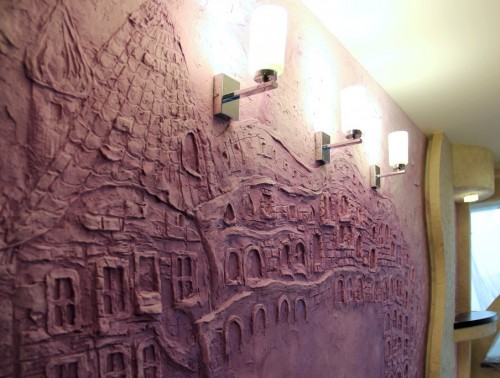
Step -by -step instructions for applying plaster
- At the first stage of work, the old coating, as well as dirt and dust, should be removed from the surface.
- Existing defects must be removed from the wall with putty.
- The next action is the application of the primer. In this case, take into account that for each specific surface type, you need to use a primer that has an appropriate binder in its composition. So if the walls have a concrete base, the material on a mineral basis should be used, and if the wall is a brick - acrylic agent.
- Apply material for priming using a roller. A layer of applied primer should be 2 mm.
- Then proceed to apply the basic plaster. Using a cell or a spatula, distribute a layer of a solution that must hide the existing surface defects.
- Let the material dry for 24 hours.
- Then cover the surface of the wall seamless plaster so that there are no cracks, depressions, and various inclinations.
- The next step in the work will be the laying of a decorative plaster coating. Here you can show creativity and independently determine the number of layers of material and application technique. The easiest way will be the coating by a ready -made solution, which acquires a unique look due to the content of special fractions.
- After performing these works, leave the walls to dry for another 24 hours. If time allows, let it dry for 48 hours.
- Next, polish and paint the surface. To achieve the effect of gloss, you can use wax or polishing agent. Or change the surface of the surface using the corresponding paint.
- The process of applying plaster is completed.
The methodology for applying a decorative relief plaster in the video is shown below:
